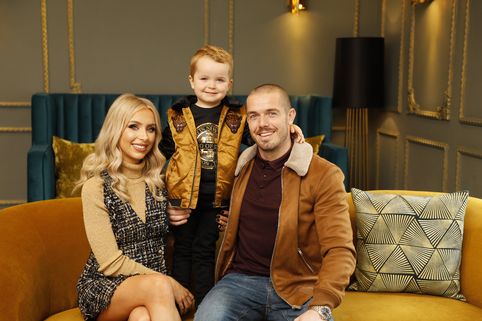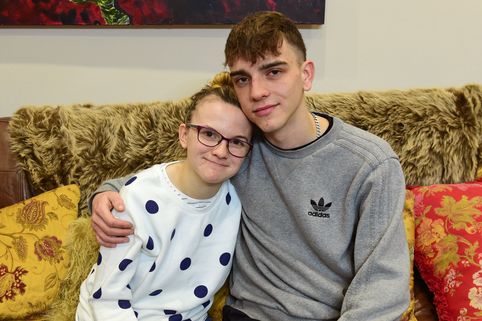
Talk to any parent and they will potentially tell you that one of their children routinely resists sleep. Whether the battle starts at bedtime or during nap time, it is a common issue.
Parents of children who continually fight sleep start to believe that their child just doesn’t like sleeping or perhaps they are so bright, they find it hard to switch off. These maybe true but it is more likely that there may be some underlying reasons behind the resistance to sleep and here we will discuss the top reasons why, your child fights sleep.
Possibly, the number one contributory factor to sleep resistance is over-tiredness.
The body manages sleep deprivation and over tiredness in specific ways. The process of sleep is determined by the biological time clock and hormonal interactions. When a child is overtired and tries to go to sleep, their body experiences a chemical response. This response is cortisol and adrenaline to the system that just has two main jobs: it makes it hard to go to sleep and it can also make it hard to stay asleep.
For all intents and purposes, the body goes into fight or flight mode, a basic survival mode which is largely represented by sleep resistance. Many parents will report it taking 1-3 hours to get their child to go to sleep, and even at that, they may wake again very frequently thereafter. What is required here is to attempt the sleep process, before over tiredness kicks in.
Commonly, over tiredness is represented by intense eye rubbing, big type yawning, agitation, clenching fists, stretching limbs, or some may say that their child becomes hyper, clumsy or highly entertaining. Others will have no adverse reaction, but may look to sit and watch the television or cuddle on your lap.
Trying to address your child’s bedtime before those obvious symptoms emerge can really diffuse the fight that you may have been experiencing.
It can be further helpful if you follow my age –relevant Nap Gap Dynamic and my Magic Number Line as you begin:
The Nap Gap Dynamic:
Observing this, can help to ensure that sleep is addressed at the right time biologically instead of solely relying on sleep cues, that can sometimes be hard to read.
Age / Hours between Nap end and in Bed Asleep / Suggested Nap End Time
4-8 months – 2-2.5 hours – 5pm
8-18 months – 3.5-4hours – 3-3.30pm
18-3 years+ – 4-5hours – 2.30-3pm
The Magic Number Line
Helps to establish a Fight Free bedtime process, used in conjunction with the Nap Gap Dynamic.
5-5.30pm Dinner
6- Final drinks/milk feeds
6.30pm bedtime routine
650pm into cot/bed
7-8 pm aim to be asleep.
Although this suggestion is very prescriptive, for an under-rested child who routinely fights sleep, this will help to diminish the fight cycle and then you can be less prescriptive with the timings as the situation improves.
Some families may try to finish the naps later and still obverse the suggested nap gap dynamic and this can sometimes work, but as it may challenge the internal body clock, it may prove to be less effective. My general recommendation would be to start on this time-line and adjust when the fight has been erased.
Another key reason can be not sleep ready enough! So the reverse of the above. Sleep pressure needs to build up in order for the body to easily accept the process of falling asleep. If the Nap Gap Dynamic is too small, then this also can result in a fight to sleep until the body is actually ready.
We are heavily relying on the body’s responses and messages. We need the natural emission of cortisol by day to give way to the natural supply of melatonin, the sleep hormone. Too much cortisol results in the tension explained above, but too little melatonin, then the body temperature, chemical and electrical connections are at odds and sleep will be elusive and stressful for all.
Referring once more to The Nap Gap Dynamic-not exceeding this and not going too much before this time either, will help you land bedtime far more efficiently.
Even with perfect timing, if you do not adequately prepare your child for sleep, we often see a high level of objection come bedtime. This is where you can utilise, the power of The Bedtime Routine. Whilst we rely heavily on the hormonal balance to help with bedtime, we also can benefit from a pre- sleep ritual to further augment the message; that it is time to sleep.
Not all bedtime routines are equal or have the same benefits. The objective is to help wind your child down, relax them and to remove them from the busy-ness of the day.
A child who routinely resists sleep, may benefit from having this time exclusively with one parent, excluding younger or older siblings, if at all possible. Again, although this can feel challenging to a family unit, it rarely takes long to establish and then re-introducing family members is possible.
Ideal ingredients for a bedtime routine that induces sleep and reduces resistances would be:
• That the process is carried out in the bedroom where you child will sleep. Doing it elsewhere can break the spell and diminish the effectiveness of what you are trying to achieve. It is best if it starts, honouring my magic number line, and then can be adjusted later on. Bath, teeth, wash up don’t make up the time that is required for the most effective bedtime process, so you want to allocate about 20 minutes for a pre-sleep ritual that takes place in the bedroom that your child will sleep in.
• Use dim/lamp light to help to enhance the sleepy hormone melatonin. Indulge in plenty of physical and eye contact to help release relaxing hormones and allow the body to accept that sleep time is coming and it’s not a bad thing! You can read stories, play low impact games like stacking cups, shape sorting or wooden puzzles. If your child is old enough you could start doing some relaxation and breathing exercises or even some meditation.
Play music, or use white noise in the background. Say familiar words and phrases that introduce calmness to the process. Do the whole bedtime routine outside of the cot or bed and reserve the cot or bed just for sleeping.
• Have an ending to your bedtime routine that is the same each night. Round the process off, with an “I love you ritual” that concludes the process and also signals that getting into the cot or the bed are what happens next. If the resistance continues once you place your child in the cot or bed, my Stay-and-
Support approach can help to ensure your child feels safe and secure during this transition.
*Other elements that contribute to sleep resistance can be too much screen time exposure, especially in the hour before bedtime. Develop ways to relax your child that don’t involve a screen; children will naturally engage with other activity once encouraged. Replacing daytime screen time, with green time, also helps to make sure that your child is active enough by day and able to settle down to sleep with ease. The screens can also falsely restore the body clock so that your child experiences a re-charge of their batteries that makes the bedtime battle longer.
*Your child’s diet can also impact their sleep, try your best to avoid high sugar or processed food and limit fruit to 2 portions a day to avoid high natural sugar exposure too that can leave some children over-stimulated. Be mindful of the curse of hidden sugars in what can sometimes seem to be perfectly healthy offerings.
*Make sure that you are providing lots of opportunity for quality one to one interactions with your child and that the fighting sleep is not a response to not spending enough meaningful time together. Be present and available throughout your time together and try not to get distracted by modern life and technology.
Be patient and predictable with any changes that you make. Give time, space and opportunity for your stress-free sleep process to emerge!
Lucy Wolfe, CGSC, MAPSC, is a paediatric sleep consultant, Author of The Baby Sleep Solution, creator of ‘Sleep Through’, natural Body and Bed Sleep Spray and Relaxing Rub, and mum of four children. She runs a private sleep consulting practice where she provides knowledge, expertise and valuable support to families across the country.
See
t: 087 2683584
e: lucy@sleepmatters.ie










